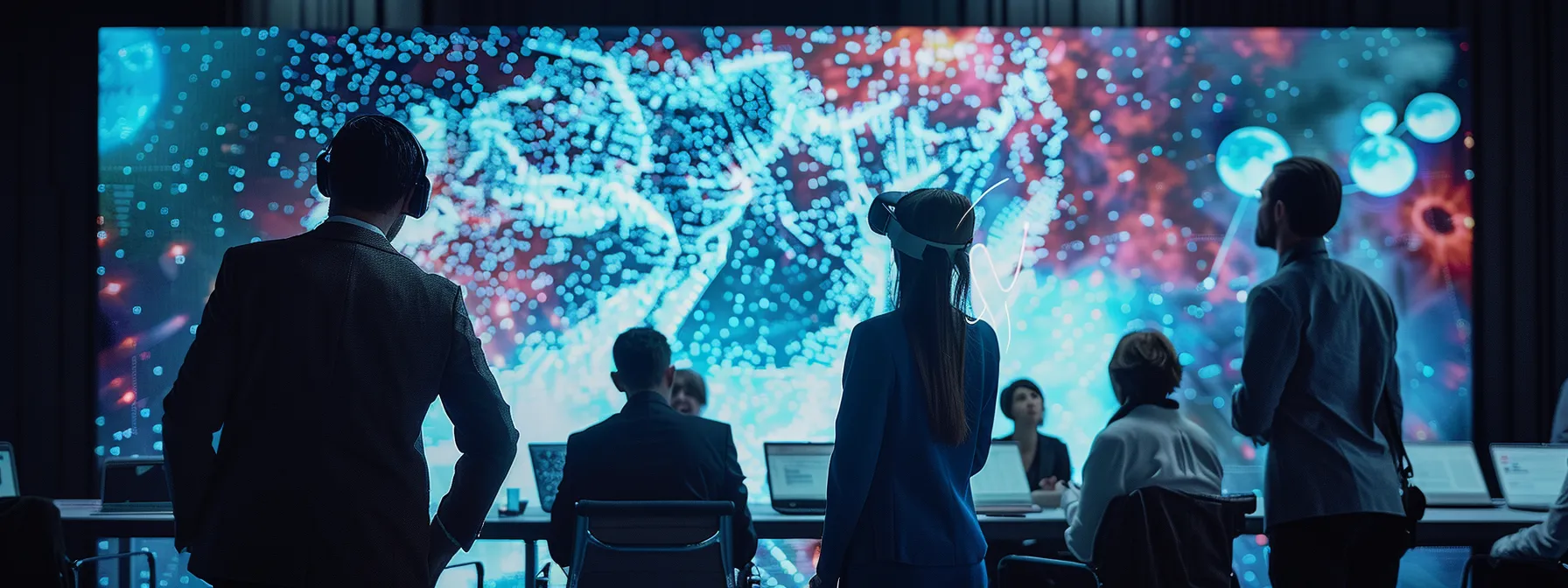Harnessing Visualization to Transform Habit Formation
Transforming habits requires more than just willpower; it involves understanding the intricate workings of your mind. Through techniques rooted in “Thinking Into Results,” you can gain autonomy over your choices and behaviors. Engaging in mental imagery can activate your basal ganglia, the part of your brain responsible for habit formation, making it a powerful tool often utilized in therapy and meditation practices. This exploration of visualization will guide you through strategies to harness your mental imagery effectively, ultimately leading to the habits you desire. Keep reading to uncover practical steps that will set you on the path to mastery over your daily routines.
Key Takeaways
- Visualization connects subconscious goals with conscious actions for effective habit formation
- Consistently practicing mental imagery strengthens commitment to new habits and lifestyle changes
- Creating a conducive environment enhances focus and engagement during visualization practices
- Celebrating small milestones fosters motivation and reinforces commitment to personal growth
- Tracking progress through journaling or partners provides accountability and insight into habit evolution
Unlocking the Power of Mental Imagery for New Habits

Understanding the basics of mental imagery is crucial for anyone looking to adopt new habits effectively. There exists a compelling correlation between visualization and successful habit formation, as it aligns your subconscious with your conscious goal setting Thinking Into Results. The science behind this concept reveals that visualizing desired outcomes can significantly influence behavior change. By integrating visualization into your daily routine, you harness the power needed for consistency. As you gain knowledge about the steps involved, you will appreciate the reason this technique has inspired real-life success stories, demonstrating its effectiveness in transforming not just habits, but entire lives.
Understand the Basics of Mental Imagery in Habit Formation
To grasp the fundamentals of mental imagery in habit formation, you must understand how it interacts with the prefrontal cortex and the nervous system. This area of your brain plays a pivotal role in decision-making and self-control, enabling you to visualize successful outcomes. By engaging your mind through imagery, you create neural patterns that mirror the actions necessary for developing new habits.
By blending these elements, you create an effective framework for habit formation.
Explore the Science Behind Visualization and Behavior Change
Understanding the principle of visualization’s impact on cognition and behavior is essential for changing habits effectively. Visualization enhances memory retention by creating mental pathways that reinforce the skills necessary for success. As you practice this technique, your awareness of how to implement new behaviors increases, allowing for more effective habit adoption.
Steps to Integrate Visualization Into Your Daily Routine
To effectively integrate visualization into your daily routine, begin by setting aside a few moments each day to create a vivid mental image of your desired habits. This practice isn’t merely helpful; it opens access to a powerful resource that can significantly decrease the pressure often associated with change. By consistently focusing on these positive images, you’ll begin to derive immense value from your efforts, creating a seamless connection between your intentions and your actions.
Consider utilizing a dedicated space in your home or a specific time in your day to reinforce this visualization practice. Whether it’s morning reflections or evening before sleep, dedicating time allows you to form a clear mental image of success, enhancing the likelihood of embodying these habits in reality. The more you commit to this visualization process, the deeper your understanding and alignment with your goals will grow.
As you cultivate this habit, pay attention to how the mental imagery shifts your perspective and motivation. Engaging with these images enhances your ability to transform aspirations into tangible results, turning pressure into a driving force for achieving your goals. This ongoing cycle of visualization and action not only solidifies your commitment but also propels you toward sustainable behavior change.
Real-Life Success Stories of Visualization in Habit Formation
Consider the story of an athlete who struggled with maintaining a healthy diet amidst the pressures of competition. Through the use of visualization, they incorporated a mental framework that allowed them to focus their attention on their goals, effectively reshaping their belief about food choices. By mentally rehearsing meals that aligned with their performance parameters, they transformed their coping mechanisms and achieved lasting dietary success.
Another inspiring example is a business professional who wanted to shift from a stressful lifestyle to one that embraced a healthier routine. By visualizing daily habits that prioritized wellness, they redirected their attention to positive behaviors, fundamentally altering their belief about what it meant to lead a fulfilling life. This practice enabled them to develop new strategies for coping with workplace challenges while sticking to their commitment to a healthy diet.
As you harness the power of mental imagery, you start to see the remarkable shifts in your daily habits. Now, let’s explore how visualization can deepen your commitment, transforming your intentions into unwavering action.
How Visualization Strengthens Your Commitment to Habits

Understanding how visualization strengthens your commitment to habits involves examining the intricate link between visualization and motivation. Research, including studies housed within databases from the Massachusetts Institute of Technology, demonstrates that engaging your cognitive faculties through mental imagery can significantly elevate your motivation levels. By consistently visualizing your desired habits, you can effectively overcome common obstacles that hinder progress. Delving into techniques to enhance your visualization practice will enable you to achieve better results and foster sustainable changes. Utilizing insights from both neuroscience and cognitive science can further empower your journey toward lasting habit formation, ensuring that your aspirations transform into realities.
The Link Between Visualization and Motivation
Research in neuropsychology highlights the critical connection between visualization and motivation, particularly in how it influences human behavior. By picturing your goals vividly, you create a powerful mental framework that not only inspires action but also fosters commitment to transformative practices such as weight loss and improved mental health. This cognitive engagement empowers you to stay focused on your aspirations, making adherence to new habits easier and more sustainable.
Several success stories stem from the effective use of visualization techniques:
- An athlete incorporating mental imagery to steer their dietary choices toward better performance.
- A business professional using visualization to shift towards a healthier work routine and lifestyle.
- Individuals leveraging visual techniques to bolster their mental health and resilience amidst challenges.
Using Visualization to Overcome Obstacles in Habit Formation
Utilizing visualization effectively allows you to address and overcome barriers in habit formation, particularly with challenges like junk food cravings that can lead to obesity. By engaging specific neurons in the brain’s striatum, you can reinforce positive behaviors that counteract the urge to indulge in unhealthy choices. This mental practice not only strengthens your commitment to healthier habits but also shifts your focus toward achieving your long-term goals.
Techniques to Enhance Your Visualization Practice for Better Results
To enhance your visualization practice for better results, start by setting clear intentions that align with your desired lifestyle changes. This clarity helps reinforce your goals and improves your focus, ultimately boosting your productivity. Incorporate innovative techniques, such as ethical visualization exercises that reflect your values, allowing for a more holistic approach to habit formation.
Incorporating visual reminders throughout your daily environment can also significantly enhance the reinforcement of your new habits. Place visual cues in strategic locations to keep your objectives front-of-mind, thereby maintaining motivation and encouraging consistency in your actions. This simple yet effective practice fosters a seamless integration of your intentions into everyday life.
Finally, consider employing guided visualization sessions that emphasize both emotional and cognitive aspects of your goals. By immersing yourself in these experiences, you strengthen the neural connections associated with your desired habits, making them feel more attainable. This layered engagement not only deepens your commitment but also empowers ethical decision-making in your pursuit of personal and professional growth.
Harnessing visualization not only solidifies your commitment but also prepares your mind for success. Let’s dive into the essential pre-visualization techniques that set the stage for achieving your goals.
Setting the Stage: Pre-Visualization Techniques for Success

To effectively harness the power of visualization in transforming your habit formation, start by identifying your habit goals clearly. This involves specifying what you wish to achieve, ensuring that your objectives align with the transtheoretical model of behavior change, emphasizing the different stages of learning. Next, craft a conducive environment that fosters focus and relaxation during your visualization practice. By setting up a space free from distractions, you allow your mind to fully engage with supportive imagery. Incorporating mindfulness exercises can further prepare you for visualization, enhancing your ability to maintain presence and tune into the positive psychology dimension of your efforts. Such exercises may be particularly beneficial for individuals on the autism spectrum, as they promote a grounded state from which effective habit transformation can emerge.
Identifying Your Habit Goals Clearly
To effectively shape your habit goals, focus on clarity by defining the specific changes you want to implement in your life. This involves an evaluation of your current behaviors and emotions related to nutrition and well-being, ensuring that every goal aligns with your overarching vision for personal growth. Embrace cognitive neuroscience principles to enhance your understanding of how your brain processes goals, allowing for better organization of your thoughts and actions.
Crafting a Conducive Environment for Visualization
Creating a conducive environment for visualization significantly enhances your ability to engage in this transformative strategy. First, ensure that your space is free from distractions, allowing your intelligence to focus solely on the neuroimage of your desired outcomes. A dedicated area for visualization practice can promote consistency and facilitate mental connections necessary for effective habit formation.
Consider incorporating elements that resonate with health promotion and align with your personal goals. This intentional setup can serve as a constant reminder of your ambitions, forming a supportive backdrop for your visualization efforts. A tailored environment not only nurtures your aspirations but also reinforces your commitment to the new habits you aim to cultivate:
- Select a quiet, comfortable space designated for visualization.
- Minimize distractions by turning off electronic devices.
- Incorporate visual cues that inspire and motivate you.
- Maintain a clutter-free area to promote mental clarity.
Mindfulness Exercises to Prepare for Visualization
Engaging in mindfulness exercises prepares your mind for effective visualization, facilitating significant behavior change. By focusing on your breath and being present, you can reduce stress and enhance your physiology, allowing for a clearer mental space. This shift not only boosts your creativity but also aligns your subconscious with the incentives that drive your desired habit transformations.
Get ready to unlock your potential through the art of visualization. This next step will guide you in transforming those powerful images into lasting habits that drive extraordinary results.
Visualizing Your Way to Habit Mastery: A Step-by-Step Guide

Creating a vivid mental picture of your desired outcome is a pivotal step in reshaping your mindset and behavior. Your brain’s capacity for neuroplasticity allows you to establish new connections that reinforce positive habits, making this visualization practice even more effective. By incorporating sensory details into your mental imagery, you enhance the realism of your goals, reducing any perceived risk associated with change and grounding them in reality. Daily visualization practices serve as a powerful reinforcement tool, solidifying the neural pathways linked to your new habits and transforming them from fleeting aspirations into lasting behaviors.
Creating a Vivid Mental Picture of Your Desired Outcome
To create a vivid mental picture of your desired outcome, focus on establishing a clear intention that resonates deeply with you. Engage your consciousness by imagining the specific stimulus surrounding your goal, whether it involves changes in your environment or emotional responses. Utilize principles from social psychology to enhance your ability to predict the outcomes of your new habits, reinforcing your commitment to their adoption.
- Define your intention clearly.
- Visualize the environment and emotions associated with your goal.
- Leverage social psychology techniques to enhance your prediction of success.
- Maintain consistent focus on this mental image to solidify your commitment.
Incorporating Sensory Details Into Your Visualization
Incorporating sensory details into your visualization engages the principles of perception, allowing you to create a vivid, immersive experience that resonates deeply within you. As William James articulated, our mental images can influence our actions, and when you enhance these visuals with sounds, smells, and textures, you effectively tap into the energy that fuels reinforcement learning. This multisensory approach not only strengthens your commitment to habit formation but also aligns your practices with findings from sources like the Centers for Disease Control and Prevention, emphasizing the crucial role that mental imagery plays in developing healthier behaviors.
Daily Visualization Practices to Reinforce Habit Formation
Incorporating daily visualization practices empowers you to engage with your brain’s biology, particularly its reward system mediated by dopamine. By understanding how visualization activates this reward pathway, you can reinforce positive behavior changes effectively. Clinical psychology emphasizes that consistent and vivid mental imagery creates a sense of anticipation for rewards, motivating you to persist in forming new habits.
With a clear vision, you’re well on your way to mastering your habits. Yet, even the best visualizations can face obstacles; let’s tackle those challenges head-on.
Overcoming Common Challenges in Visualization Practice

As you embark on your journey to transform habit formation through visualization, be aware that mental barriers may arise, often influenced by cognitive bias. You must recognize these hurdles and push past them with assertiveness, drawing inspiration from concepts such as the implementation intention technique found in “The 7 Habits of Highly Effective People.” To enhance your focus during visualization, consider adjusting your techniques to better engage your cerebral cortex, allowing for more targeted mental imagery. Discipline plays a key role in maintaining consistency in your practice; establish routines that reinforce your commitment. By confronting these challenges head-on, you pave the way for effective and sustainable habit transformation.
Recognizing and Pushing Past Mental Barriers
As you delve into the practice of visualization, recognizing and pushing past mental barriers associated with addiction or fear is crucial. These barriers often signal a resistance to change, hindering your ability to form new habits effectively. By actively challenging these thoughts, you create opportunities to reframe your mindset and embrace the transformative potential of visualization.
To move beyond mental hurdles, focus on identifying the underlying fears that may arise during your visualization practice. Recognizing these fears allows you to crossref your emotional responses with your goals, paving the way for constructive change. By tackling these barriers head-on, you empower yourself to foster a robust habit formation process, ultimately leading to lasting improvements in your life.
Adjusting Your Visualization Techniques for Better Focus
To enhance your focus during visualization practices, consider modifying your techniques to suit your specific needs. Experimenting with different visualization methods, such as guided imagery or concentrated breathing exercises, can significantly improve your mental clarity and concentration. Tailoring these approaches allows you to establish a deeper connection with your goals and enhances the overall effectiveness of your visualization practice.
Implementing these adjustments will help you overcome distractions and cultivate a more focused mindset, facilitating a deeper engagement with your visualization practice.
Tips for Maintaining Consistency in Your Visualization Practice
To maintain consistency in your visualization practice, establish a routine that seamlessly integrates this technique into your daily life. Consider using reminders, such as alarms or notes, to prompt you at the designated time, ensuring that visualization becomes a non-negotiable aspect of your day.
Create a supportive environment that encourages your visualization efforts. This could include designated spaces or inspiring visuals that resonate with your goals, fostering an atmosphere conducive to focusing on your objectives:
Incorporate mindfulness techniques before your visualization sessions to enhance concentration. By grounding yourself in the present moment, you amplify your focus and prepare your mind to engage fully with the visualization process.
Visualization serves as a catalyst for transformation, bridging the gap between intention and action. Now, let’s explore how this powerful practice influences habit change and creates lasting results.
Measuring the Impact of Visualization on Habit Change

As you embark on the journey of habit transformation through visualization, it’s vital to implement effective tools and techniques that allow you to track your progress meaningfully. Monitoring changes in both behavior and mindset equips you with the insights needed to understand your evolution over time. By documenting your strides, you create a tangible representation of your commitment, helping you recognize and evaluate the positive shifts taking place. Moreover, celebrating milestones along the way serves as crucial motivation, reinforcing your dedication to habit formation. Acknowledging these achievements not only fosters a sense of accomplishment but also energizes you to pursue further growth and maintain momentum in your journey.
Tools and Techniques for Tracking Your Progress
Utilizing a habit tracker app or journal can effectively document your visualization practice and its impact on your habits. By recording daily insights and progress, you develop a clear understanding of your evolution and identify patterns that contribute to your success. Regular reflections on your experiences not only reinforce your commitment but also inform your future visualization techniques.
An accountability partner can also play a significant role in tracking your progress, as they provide encouragement and feedback on your journey. Sharing your visualization goals with another person fosters a sense of connection, pushing you to remain committed to your new habits. Having someone to celebrate milestones with enhances your motivation as you work towards lasting change.
Evaluating Changes in Behavior and Mindset
To effectively evaluate changes in behavior and mindset, engage in regular self-reflection and assessment of your visualization practices. By tracking your emotional responses and actions related to your new habits, you can gain valuable insights into the progress you’re making. This ongoing evaluation helps you refine your techniques, ensuring you stay aligned with your goals and foster continuous personal growth.
Celebrating Milestones in Your Habit Formation Journey
As you progress in your habit formation journey, take the time to celebrate each milestone you achieve. Recognizing and acknowledging your accomplishments reinforces your motivation and strengthens your commitment to your goals. By honoring these moments, you create positive reinforcement that propels you forward, fostering an enduring connection with your new habits.
Celebrating milestones contributes to a positive mindset, which is crucial for sustained behavior change. Each achievement, no matter how small, serves as a reminder of your growth and the determination that drives you. Embrace these occasions as vital checkpoints that mark your progress, providing you with the confidence to tackle future challenges.
Incorporating celebrations into your habit formation process transforms the journey into a rewarding experience. By reflecting on your successes, you cultivate a sense of fulfillment that not only energizes your current efforts but also inspires additional growth. This practice will keep you engaged and committed to your goals, making your vision of success even clearer.



